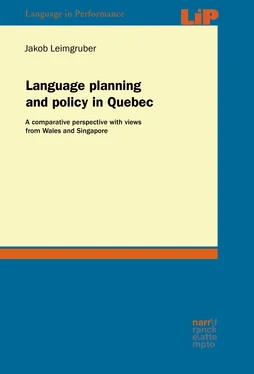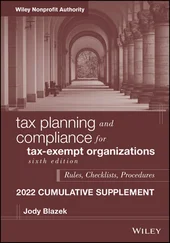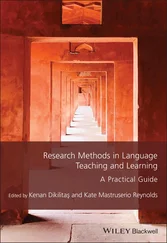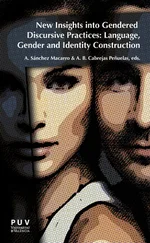1 ...6 7 8 10 11 12 ...19 Section 3 of the act spells out the ‘multiculturalism policy of Canada’, which consists of ten components: (s 3(1)(a)) the recognition and promotion of multiculturalism and ‘the freedom of all members of Canadian society to preserve, enhance and share their cultural heritage’, (b) the recognition of multiculturalism as fundamental to the country’s heritage and identity and as an ‘invaluable resource’, (c) full and equal participation in society of everyone, regardless of origin, (d) the recognition of cultural communities, (e) equality under the law, (f) respect by the institutions of Canada towards its multicultural character, (g) ‘promote the understanding and creativity that arise from the interaction between individuals and communities of different origins’, (h) foster recognition and appreciation of diverse cultures, (i) ‘preserve and enhance’ languages other than French and English, while at the same time promoting the use of the official languages, (j) ‘advance multiculturalism throughout Canada in harmony with the national commitment to the official languages of Canada’. Among other duties, federal institutions shall ‘make use, as appropriate, of the language skills and cultural understanding of individuals of all origins’ (s 3(2)(a)); a further mandate specifies that the ministry may ‘facilitate the acquisition, retention and use of all languages that contribute to the multicultural heritage of Canada’ (s 5(1)(f)).
Multiculturalism, therefore, is defined as being an essential ingredient of Canadian identity, and as beneficial to the country’s development. The Canadian Multiculturalism Act goes beyond these general observations and tasks federal institutions with the promotion of multiculturalism, the promotion of cross-cultural and cross-ethnic understanding, the support of cultural and linguistic heritage, and the support of minority communities. The high level of commitment to this policy is evidenced by the creation, in 1991, of a Ministry of Multiculturalism and Citizenship (later superseded by the Ministry of Canadian Heritage). As far as language is concerned, the official languages are promoted, and special emphasis is put on the teaching of the official languages to speakers of other languages. However, in contrast to other language policies that simply state that non-official languages are not prohibited or may receive support at the government’s discretion (see e.g. Constitution of Singapore s 153A(2), Constitution of Switzerland s 18, Constitution of Malaysia s 152(b)), the Canadian Multiculturalism Act specifically encourages the support of cultural and linguistic heritage, with the necessary funding being made available by the government.
The provinces have enacted respective multicultural legislation, too. In the case of Quebec, the policy is designated interculturalism instead, and the focus is on
the acceptance of, and communication and interaction between, culturally diverse groups (cultural communities) without, however, implying any intrinsic equality among them. Diversity is tolerated and encouraged, but only within a framework that establishes the unquestioned supremacy of French in the language and culture of Quebec.
(Dewing, 2009, 15)
Thus the primacy of French is of paramount importance in the context of Quebec’s understanding of multiculturalism, rebranded interculturalism to highlight this crucial difference to the Canadian policy. Section 2.3 will address this in more detail, and how it impacts on questions of citizenship in Quebec. First, however, a closer look at language policies in the rest of Canada (the ‘ROC’, or le ROC [lə ʁɔk], as it’s called in Quebec) is warranted.
2.2.2 English Canada: official monolingualism, French language provisions, allophone presence
The official bilingualism in Quebec that came with the British North American Act 1867 was practically limited to that province, with the exception of Manitoba, which was created as an officially bilingual province in 1870. New Brunswick is, today, the only officially bilingual province with a numerically significant population of Francophones. It is also the only province to have its bilingualism enshrined in the federal constitution. The case of New Brunswick will be dealt with in more detail in section 2.4.
Federal legislation gives some protection to official language minorities in the provinces, i.e. to speakers of English in Quebec and to speakers of French elsewhere. The Canadian Charter of Rights and Freedoms spells out, in section 23, what are ‘minority language educational rights’: it ensures that Canadian citizens have the right to receive primary and secondary education in their first language (s 23(1)), a right extended to the siblings of any citizen’s child who has received education in that language (s 23(2)). This right, however, is limited by section 23(3), which says that it ‘applies wherever in the province the number of children of citizens who have such a right is sufficient to warrant the provision to them out of public funds of minority language instruction’. This phrasing has led to several court decisions on what is ‘sufficient to warrant’ French instruction, notably in Alberta (1990) and Prince Edward Island (2000). Often the importance of protecting the linguistic minority despite the small numbers was taken into account. The provisions of section 23 of the Charter do not apply to Quebec, a fact discussed below (section 2.3).
The issue of an education system in the minority language is also what is at the heart of Manitoba’s language policy. Manitoba was a prime destination for and is still host to a large community of Métis, a mixed Aboriginal-Francophone ethnic group whose languages include several Aboriginal languages, French, and Michif (a mixed language of Cree and French origin). The province, having been established as an officially bilingual province by the Manitoba Act 1870, quickly saw demographic change to the disadvantage of the francophone population, which translated into a gradual slide towards de facto monolingualism by the 1880s (Bothwell, 2007, 243). A new provincial government abolished the official status of French and its schools in 1888. The federal government intervened in 1896, but in 1916 French public education was scrapped again, to be reinstated only in 1966. As far as the official status of French is concerned, the Supreme Court of Canada ruled in a landmark case in 1985 that both English and French are required as official languages per the Constitution Act 1867 and the Manitoba Act 1870 and that ‘[a]ll of the unilingual Acts of the Legislature of Manitoba are, and always have been, invalid and of no force or effect’ (because of the legal vacuum that this decision alone would have created, all legislation is deemed ‘temporarily valid and effective’ for the ‘minimum period necessary for translation, re-enactment, printing and publishing’). Manitoba is, therefore, an officially bilingual province.
Official bi- and multilingualism is also found in the three territories. Yukon is officially bilingual in English and French. While the aboriginal languages spoken in the territory (Gwich’in, Hän, Upper Tanana, Northern Tutchone, Southern Tutchone, Tagish, Inland Tlingit, Kaska, cf. Council of Yukon First Nations 2016) are recognised as ‘significant’ in the territorial Language Act, only French and English are used and available in all branches of government. The Northwest Territories (NWT) passed its Official Languages Act in 1984, making English and French co-official, and ‘recognising’ the Aboriginal languages of the territory. In 1990 the Act was amended to recognise as ‘official aboriginal languages’ the following nine languages: Chipewyan, Cree, Tłı̨chǫ (Dogrib), Gwich’in, North Slavey, South Slavey, Inuktitut, Inuvialuktun, and Inuinnaqtun. Like in Yukon, the Act does not require their use in the legislature and the executive, but they may be used in court. The third territory, Nunavut, was carved out of the Northwest Territories in 1999, taking with it the NWT Act. This was replaced in 2008 with a new Official Languages Act, which removed references to NWT languages not in use in Nunavut – a step made possible by the large Inuit majority. The territory has now four official languages: ‘the Inuit language’ (comprising both Inuktitut and Inuinnaqtun), English, and French. A lot of effort has been going into language maintenance and revival, in the education system as well as in public life. Among them is a recent (2015) proposal to replace the alphasyllabic writing system used by Inuktitut1 (but not Inuinnaqtun) by a Latin-based system, in order to increase literacy in the language.
Читать дальше












